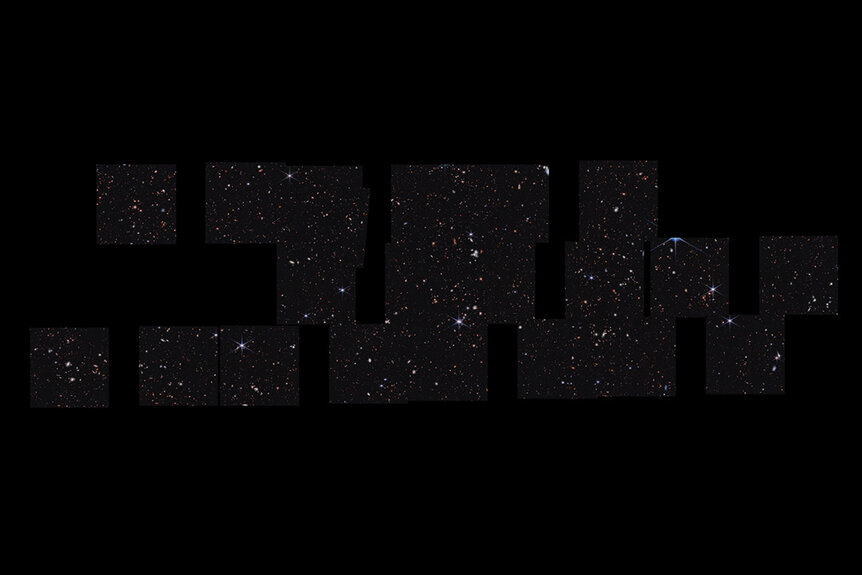Create a free profile to get unlimited access to exclusive videos, sweepstakes, and more!
JWST Spies the Most Distant Supermassive Black Hole Ever Discovered
And it could help us understand the evolution of the universe.
When astronaut John Crichton (Ben Browder) hopped aboard the experimental Farscape spacecraft, he couldn’t have known the adventure he was in for. After accidentally slipping into a wormhole, he emerged in a distant region of the universe filled with warring alien species, advanced technologies, and incredible cosmic sights.
The rest of us have to rely on telescopes to see the far reaches of the universe, but that’s not a bad consolation prize, especially with telescopes like Hubble and the James Webb Space Telescope (JWST) doing the looking. In recent months, the JWST has returned images of Saturn, a star-forming region in the Orion nebula, and cloud structures on a planet orbiting another star. Now it’s hunting for black holes at the furthest reaches of the universe.
Record Breaking Black Hole Discovery
Recent observations were carried out as part of the Cosmic Evolution Early Release Science (CEERS) Survey, led by Steven Finkelstein from the University of Texas at Austin. As the name suggests, the program aims to better understand the evolution of the early universe using JWST’s unmatched resolution.
RELATED: NASA’s JWST Returns an Alien Weather Report from a Distant World
During recent observations, astronomers identified 11 galaxies which existed between 470 and 675 million years after the Big Bang, making them some of the earliest galaxies ever discovered. One of them — a galaxy which formed about 570 million years after the Big Bang, dubbed CEERS 1019 — houses a supermassive black hole unlike any we’ve seen before.
It is the most distant active supermassive black hole ever discovered, which is enough to put it in the record books, but it also has some unusual characteristics. Other supermassive black holes discovered in the early universe have been significantly larger, on the order of a billion solar masses. The black hole inside CEERS 1019, however, is only about 9 million solar masses. It’s closer in character to the black hole at the center of our own galaxy (which clocks in at a modest 4.6 million solar masses) than it is to its own contemporaries.
Despite its comparatively small size, the CEERS 1019 black hole existed much earlier than other known black holes and it isn’t totally clear how it got so massive in so short a time. These sorts of detections and these sorts of questions are precisely what the CEERS program was intended to investigate and it’s likely the hits will keep coming. Researchers suggest that CEERS 1019 will only hold the record for a little while. Already, the JWST has identified other black holes which are potentially more distant and therefore from even earlier in the evolution of the universe.
“Until now, research about objects in the early universe was largely theoretical. With Webb, not only can we see black holes and galaxies at extreme distances, we can now start to accurately measure them. That’s the tremendous power of this telescope,” Finkelstein said, in a statement.
If Crichton wanted to see the universe, he could have just stayed home. The view from here is spectacular. Of course, if he hadn’t gone, we couldn’t have watched his amazing adventures.
Farscape is streaming now, on Peacock!































